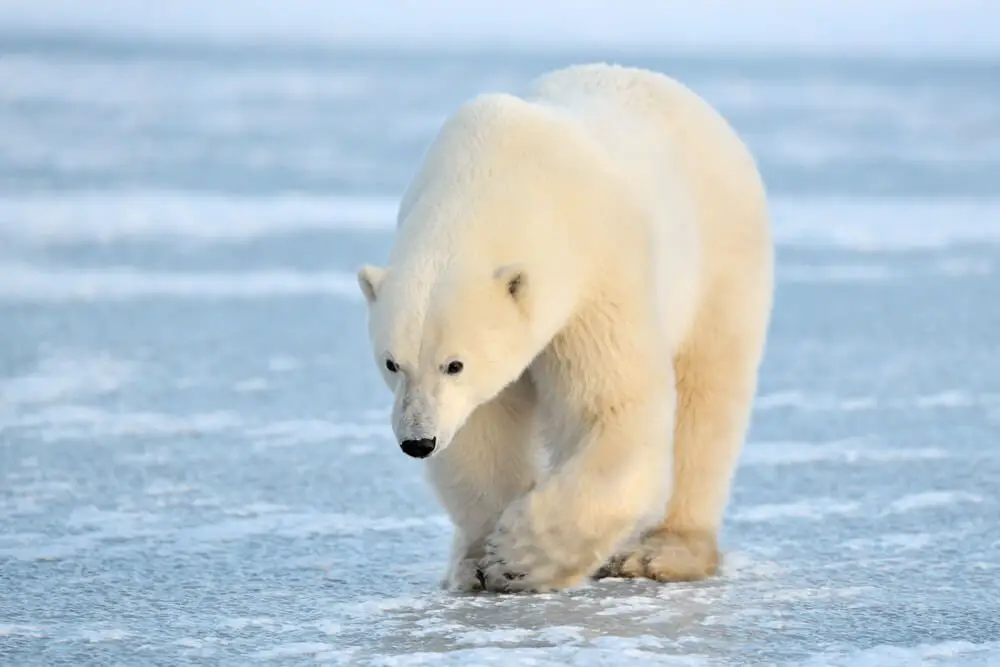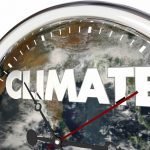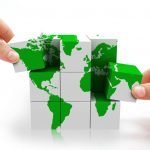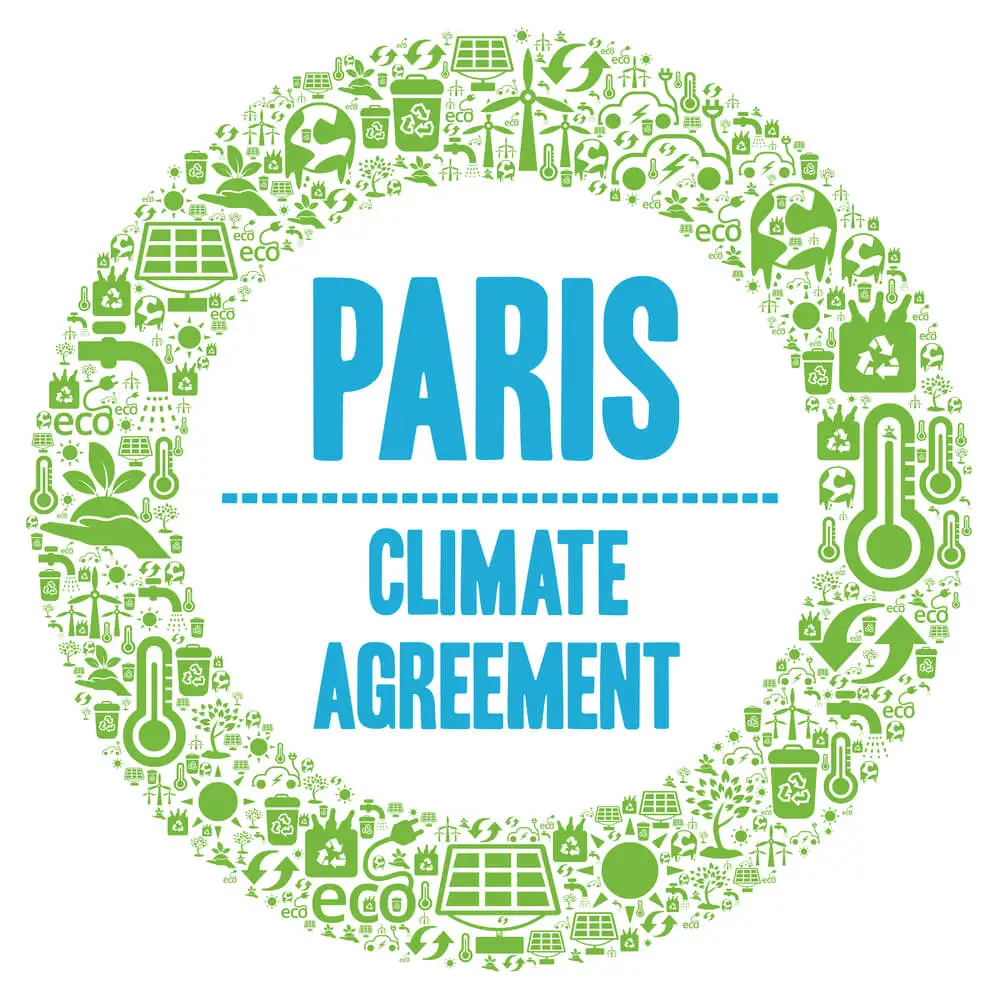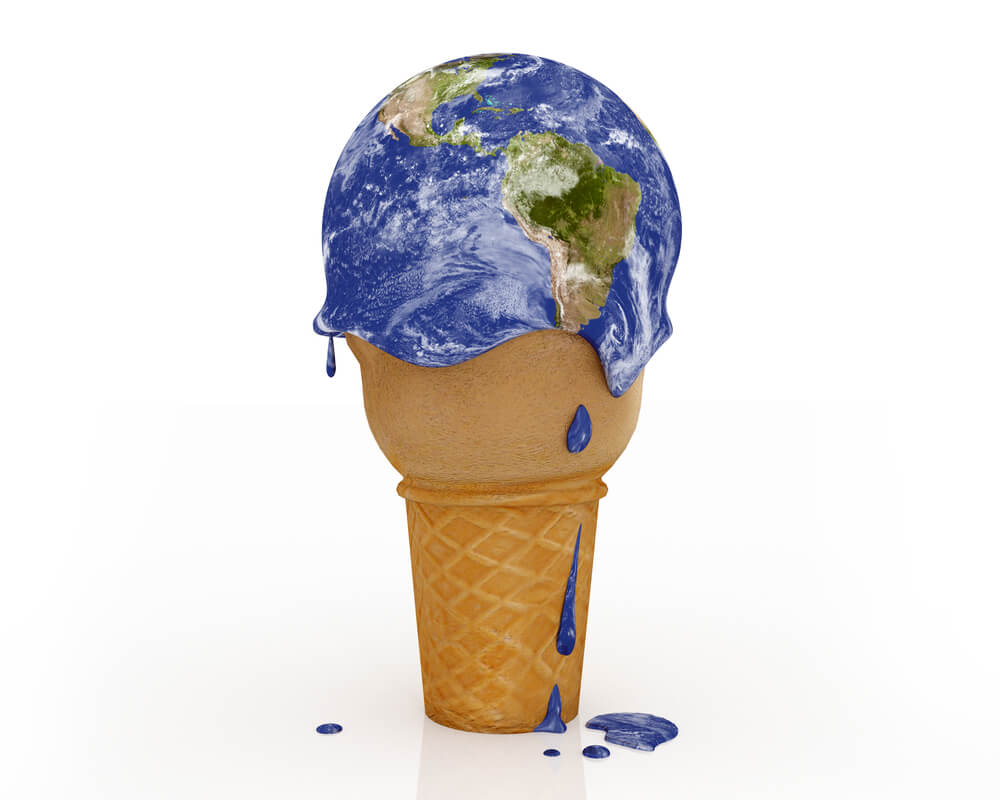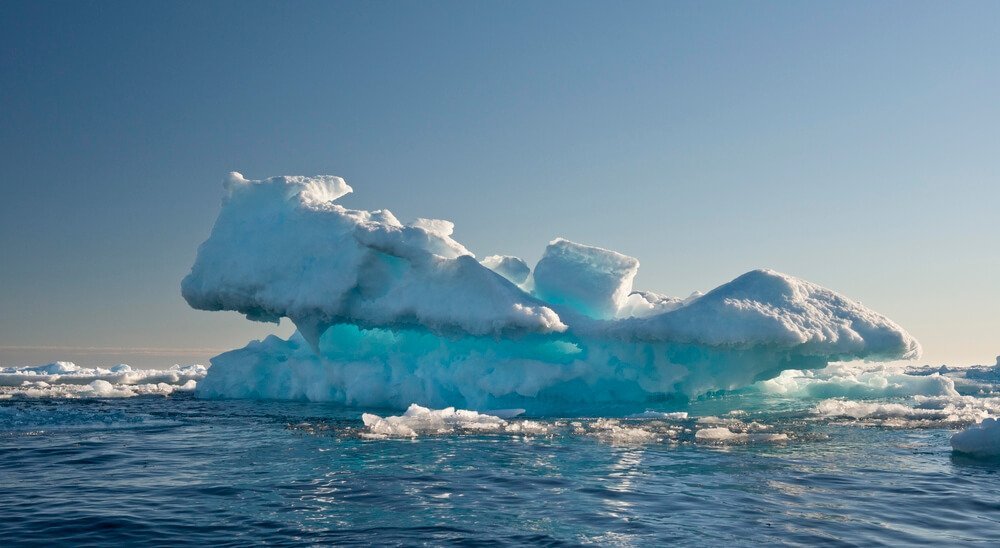We have all seen the posters with the really cute-looking polar bears on them hanging up around schools and buildings.
These posters are made either by concerned citizens or nonprofit organizations looking to raise awareness for the plight of polar bears as the ice caps are melting.
But are polar bears actually going extinct because of humans’ disregard for the environment?
Let’s dive into the science behind it and figure it all out!
Let me lay out some basic facts about polar bears and their habitats to get a general idea of what the future holds for them:
- Polar Bears live in regions spanning the Arctic regions of Canada, Norway, Russia, Greenland, Denmark, and the United States.
- Polar bears’ primary habitat is on sea ice because it is the best platform for hunting their prey: seals.
- Sea ice loss due to climate change is the polar bear’s biggest threat.
- There are nineteen different regions that polar bears inhabit, and every single one of these subpopulations of polar bears has lost some degree of their ice habitat.
- Polar bears are listed as a vulnerable species, meaning they face a high risk of extinction if nothing is done to prevent their demise.
According to Earth.org, “A new study has predicted that most polar bears in the Arctic will become extinct by 2100 if greenhouse gas emissions remain on their current trajectory.
Further, polar bears are likely to experience reproductive failure by 2040, reducing the number of offspring needed for population maintenance.”
This study is published on Nature Climate Change, and it analyzes how polar bears will be affected in two different greenhouse emissions scenarios.
Every single subpopulation of polar bears has been affected by climate change in one way or another.
Why is climate change disproportionately affecting polar bears?
Sea ice is the primary place where polar bears can hunt for seals, rest, and breed, but the sea ice is melting globally.
Putting together the pieces of this question is relatively straightforward: ice disappearing means polar bears are disappearing.
Climate change affects polar bears more so than any other animal because other animals can survive in warmer places and do not require ice as their primary habitat.
Polar bears are incredibly high-energy carnivores. According to National Geographic, polar bears burn about 12,325 calories a day.
Polar bears rely primarily on a calorie-loaded diet of seals.
Polar bears attempt to minimize their energy by a process called still-hunting.
They will wait for a long time because of the seal’s breathing holes in sea ice.
As a seal surfaces for a breather, the bear stands up and whacks it in the head with its front paws.
This action stuns the seal giving the bear just enough time to bite its neck and drag it onto the ice for a meal.
This process is the most popular form of hunting for polar bears.
The sea ice melting left and right causes the polar bears to grow more hungry because they have less hunting area.
Climate change is warming the Arctic faster than anywhere else in the world.
National Geographic also points out that, “Even today, in the middle of the bitter cold Arctic winter, satellites show there is about 770,000 square miles less sea ice than the 1981 to 2010 median (That’s an area larger than Alaska and California combined).”
Polar bears have to expend a lot more energy having to walk or swim to find new hunting spaces.
They are also fasting longer by living off the fat they have stored up.
What impact is global warming likely having on polar bear populations?
The climate change crisis the world is facing is because of the excessive use of fossil fuels by humans.
Fossil fuels power most of our industrial processes worldwide. Fossil fuels are the input to the machinery, and the output is greenhouse gas emissions that enter our atmosphere.
These emissions should typically escape into space, but many of the emissions are not escaping. Rather, they are staying in our atmosphere.
This is a problem because these particular gases trap heat inside our atmosphere instead of reflecting the heat back into space.
This causes the greenhouse effect, in which heat is trapped in our atmosphere at higher rates.
This, in turn, causes our atmosphere to grow hotter and hotter, melting the ice caps in the arctic at alarming rates and destroying our environment.
The globe is warming, and we all know ice needs to be in a cold environment to stay ice.
This is something even little kids understand.
Because the atmosphere is heating up, the ice is starting to melt. It is even proven that the Arctic is heating up faster than anywhere else.
Thus, global warming is melting and destroying polar bears’ habitats and giving them nowhere to live.
Challenges affecting polar bears
Polar bears are not only being challenged by global warming, causing their habitat to melt, but there are many other challenges they are facing every day.
- Toxic pollution – Because polar bears are at the top of the food chain, they are exposed to high levels of pollutants that their prey has ingested. These pollutants and toxic chemicals that polar bears are ingesting disrupt their natural and biological functions, such as growth, reproduction, and the ability to fight off diseases.
- The danger of toxins also affects the cubs because their mother’s milk contains high levels of the toxins she has ingested. This leads to lower survival rates amongst polar bear cubs.
Oil Expansion and Exploration – The oil and gas industry is moving into the Arctic at an alarming rate because more accessible reserves down south are drying up.
The most significant risk for polar bears is the offshore operations because spills, leaks, and emissions will be discharged into the sea or onto the sea ice, which is the polar bear’s home.
Oil expansion and exploration affect polar bears in four different ways:
- Oil can reduce the insulation of polar bear’s fur.
- By grooming themselves or eating contaminated prey, polar bears can ingest the oil, which will poison them.
- The creation and operation of oil facilities will disturb and negatively affect polar bear’s homes and the polar bears themselves.
- There is currently no proven effective method of cleaning up an oil spill in the arctic because of its extreme conditions. Due to this, if an oil spill occurs, there could be massive consequences with little in the way of solutions.
Will polar bears adapt to climate change?
According to National Geographic, “There are fewer than 25,000 polar bears left in the wild, according to the nonprofit organization Polar Bears International.
Near the southern Beaufort Sea (map), for instance, the population has dropped about 40 percent between 2001 to 2010, from 1,500 to 900 bears.”
Polar bears around the world are getting creative in order to survive.
They are surrounded by scientists in the arctic, changing how they hunt and even eating people’s food to stay alive.
These tactics are not enough to save the polar bears, though, according to scientists studying the rate at which the ice is melting and the rate at which polar bears can adapt.

National Resources Defense Council delves into the facts by stating, “polar bears split from brown bears hundreds of thousands of years ago (or longer), it took them at least 10,000 – 30,000 years to evolve into the big, white, ice-dwelling creatures we know today.
Even if they could “re-evolve” so quickly back into terrestrial bears, it would be far too slow a pace to keep up with today’s warming trend.”
In the past, polar bears have persisted through evolution over long periods of global warming, but the rapid pace at which ice is melting in our day and age makes it impossible for polar bears to continue.
There is not enough time.
How can we save global warming from polar bears?
Polar bears are becoming extinct because of global warming.
That is the sad truth, but we can put in the effort to mitigate global warming and help their populations through these solutions:
- Volunteering your Time
- Fight Climate Change
- Fundraising
- Use Your Voice to Raise Awareness
- Vote for Elected Officials who Share Your Beliefs
What would happen if polar bears become extinct?
So why should we care? What does it really matter if polar bears are no longer on this Earth? To begin with, the seal population will grow because the primary predator that hunts them will no longer be a threat because they are extinct.
If the seal population grows exponentially, the fish population will decrease because more and more sales are hunting them.
The whole food chain that was working will ultimately turn on its head.
It is also possible that seals and other predators including sharks, and killer whales, will increase in population size to compensate for the increase in the seal population.
The food chain will continue to ripple and change, affecting a larger circle of animals due to one animal, the polar bear, becoming extinct.
Conclusion
Polar bears are not just the cute animal we see on those posters.
They are a vital part of Earth’s ecosystem, and it is our duty to diminish the impacts of global warming because we have caused it.
The Earth is not only ours. We share it with animals and plants alike.
We can not selfishly let animals die off without regard for our actions.
